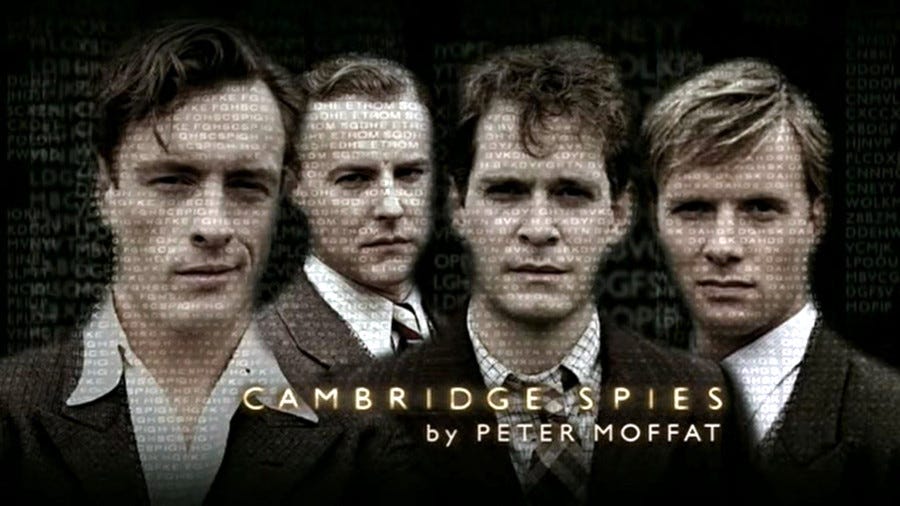Stream On! The tolerably true story of the notorious Cambridge Five spy ring
The ‘Cambridge Five’ was a spy ring in the United Kingdom that passed information to the USSR during the WWII and the Cold War, from the 1930s–1950s.
Guy Burgess, Kim Philby, Anthony Blunt and Donald Maclean are still well-known in Britain despite coming to national attention way back in 1951. While studying at Cambridge they were recruited by Soviet agents into a world of espionage, and fueled by idealism, a passion for social justice, and a talent for lying, they took huge personal risks to pass Britain's biggest secrets to Moscow.
Over twenty years of spying, the four were bound by their beliefs, the secrets they know about one another, and the knowledge that they stand or fall together.
/Streaming /Amazon Prime /🍿82% /Clips /2003
Donald Maclean (played by Rupert Penry-Jones) meets drama addict Guy Burgess (Tom Hollander, Feud: Capote and the Swans); both were students at the University of Cambridge in the early 1930s. Having both disagreed with the idea of capitalism, they are recruited by Soviet intelligence operatives and become undercover agents. Maclean begins delivering information to the Soviets as a member of the Foreign Office in 1934. Burgess also began supplying information from various positions between 1936 and 1944, first as a BBC correspondent, then as an active member of British intelligence, and then finally as a member of the Foreign Office.
Harold “Kim” Philby (Toby Stevens), a senior officer in Britain's Secret Intelligence Service, MI6, begins to spy for the Soviet Union in 1934. He is known for passing more than 900 British documents over to the NKVD and its successor, the KGB. He served as a double agent.
Anthony Blunt (Samuel West) was a former Surveyor of the King's Pictures and later Queen's Pictures for the royal art collection. He served as an MI5 member and supplied secret information to the KGB, while also providing warnings to fellow agents of certain counterintelligence that could potentially endanger them.
John Cairncross (Alastair Galbraith) was known as a British literary scholar until he was later identified as a Soviet atomic spy. While a civil servant in the Foreign Office, he is recruited in 1937 to become a Soviet spy. He moves to the Treasury in 1938 but transfers once again to the Cabinet Office in 1940 where he serves as the private secretary of Sir Maurice Hankey, the Chancellor of the Duchy of Lancaster at that time. In May 1942, he transfers to the British cryptanalysis agency, the Government Code and Cypher School, at Bletchley Park and then, in 1943, to MI6. Following World War II, it is said that Cairncross leaked information regarding the new NATO alliance to the Soviets.
In the telling of this still fascinating tale, dramatic license is taken; still, the drama is formidable. Mark Lawson from The Guardian said “Cambridge Spies is high-class drama, but historically it's best regarded as a cover story.”
Appearing on Newsnight, a BBC TV current affairs program, Will Self, of the Evening Standard, said “I think the historical inaccuracy is unforgivable. These are recent events. The real story is exciting and incredibly revealing of the nature of the British establishment at the time and on an enduring level. The historical liberties that have been taken, kick off from the start.” Viewing figures for the series averaged two million per episode.
Sources include Wikipedia (Creative Commons Attribution-ShareAlike 4.0 License).
Pete Hummers is a participant in the Amazon Services LLC Associates Program, an affiliate advertising program designed to earn fees by linking Amazon.com and affiliate sites. This adds nothing to Amazon's prices. This column originally appeared on The Outer Banks Voice.




